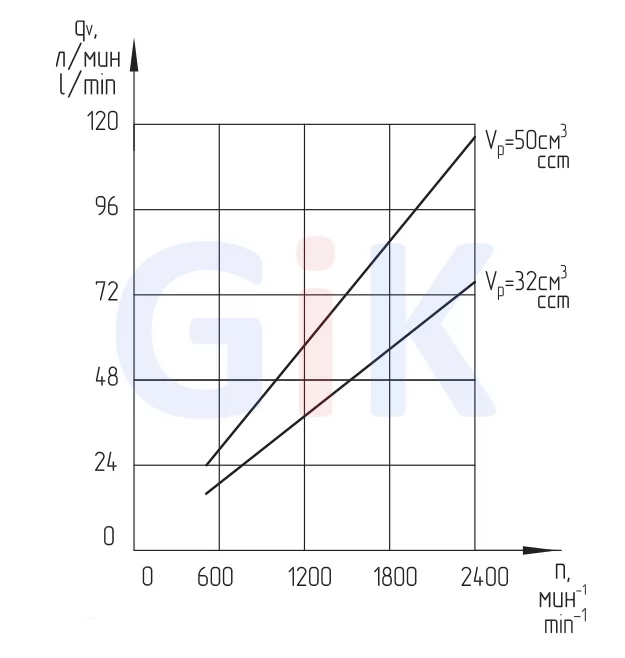Hello!
To avoid necroposting or derail someone's thread, I decided to post my own. As title says, I have stupid idea to make forge press from parts, sourced from tractor. To be precise, it is old forest skidder or something like that. Machine itself is 6,5 tons, with capability to carry another 2,5 tons. That would be the donor for my project. And no, I don't plan to restore it.
There are two cylinders, piston is 110mm (4,3in), rod is 40mm (1,57in), cylinder length is 34cm (13in). Cylinders move up or down carry bed, where 2,5 tons of stuff (usually logs) is transported.
Oil pump is rated for nominal 2300psi with max 3000psi. I have found conflicting info for flow rate, as low as 75l/min (19gpm) and up to 27-30gpm. It is single stage. Machine is really old and I don't have documentation for parts specs. I know nominal engine rpm, but without taking pieces apart, I don't know oil pump rpm. It is driven by gears, I can calculate once I have it on table. Engine is seized, machine itself is scrapped.
Oil tank have built in filter, capacity is at least 20l (5gal), haven't really measured it. Control unit or directional control valve (if translated correctly) have P40/75 name, for what it is worth, I don't know. Again, conflicting info in different manuals, I found one what states flow rate 75l/min (19gpm).
I have plenty steel and welding skills to make forge press beast, at least in my head there is idea. If it is viable, it would be project for winter. I haven't calculated potential press force or ram speed, for now it is just an idea. I would like to use both cylinders, they are in parallel in skidder, with metal couplings between them. I just need to bend oil tubes a little, because now cylinders are ~60cm (23in) apart. In press they should be side by side, right? Assuming I have most parts to make forging press, I have thought about powering such unit - no way my home electric grid can handle that. I have option to use diesel generator (8kvA), or petrol engine (12hp). If I go diesel generator route, I already have 2 identical 4kw 3phase motors. I can buy 7,5kw (10?hp) motor. All 3 phase, AC 220/380.
Well, there it is. Feel free to throw any idea or question at me. I would love to brainstorm about all that, to learn and avoid mistakes. Maybe my idea is wrong, maybe I don't have all parts what I need, maybe what I have is not optimal for what I want to build, that is for discussion, so shoot away!
To avoid necroposting or derail someone's thread, I decided to post my own. As title says, I have stupid idea to make forge press from parts, sourced from tractor. To be precise, it is old forest skidder or something like that. Machine itself is 6,5 tons, with capability to carry another 2,5 tons. That would be the donor for my project. And no, I don't plan to restore it.
There are two cylinders, piston is 110mm (4,3in), rod is 40mm (1,57in), cylinder length is 34cm (13in). Cylinders move up or down carry bed, where 2,5 tons of stuff (usually logs) is transported.
Oil pump is rated for nominal 2300psi with max 3000psi. I have found conflicting info for flow rate, as low as 75l/min (19gpm) and up to 27-30gpm. It is single stage. Machine is really old and I don't have documentation for parts specs. I know nominal engine rpm, but without taking pieces apart, I don't know oil pump rpm. It is driven by gears, I can calculate once I have it on table. Engine is seized, machine itself is scrapped.
Oil tank have built in filter, capacity is at least 20l (5gal), haven't really measured it. Control unit or directional control valve (if translated correctly) have P40/75 name, for what it is worth, I don't know. Again, conflicting info in different manuals, I found one what states flow rate 75l/min (19gpm).
I have plenty steel and welding skills to make forge press beast, at least in my head there is idea. If it is viable, it would be project for winter. I haven't calculated potential press force or ram speed, for now it is just an idea. I would like to use both cylinders, they are in parallel in skidder, with metal couplings between them. I just need to bend oil tubes a little, because now cylinders are ~60cm (23in) apart. In press they should be side by side, right? Assuming I have most parts to make forging press, I have thought about powering such unit - no way my home electric grid can handle that. I have option to use diesel generator (8kvA), or petrol engine (12hp). If I go diesel generator route, I already have 2 identical 4kw 3phase motors. I can buy 7,5kw (10?hp) motor. All 3 phase, AC 220/380.
Well, there it is. Feel free to throw any idea or question at me. I would love to brainstorm about all that, to learn and avoid mistakes. Maybe my idea is wrong, maybe I don't have all parts what I need, maybe what I have is not optimal for what I want to build, that is for discussion, so shoot away!


